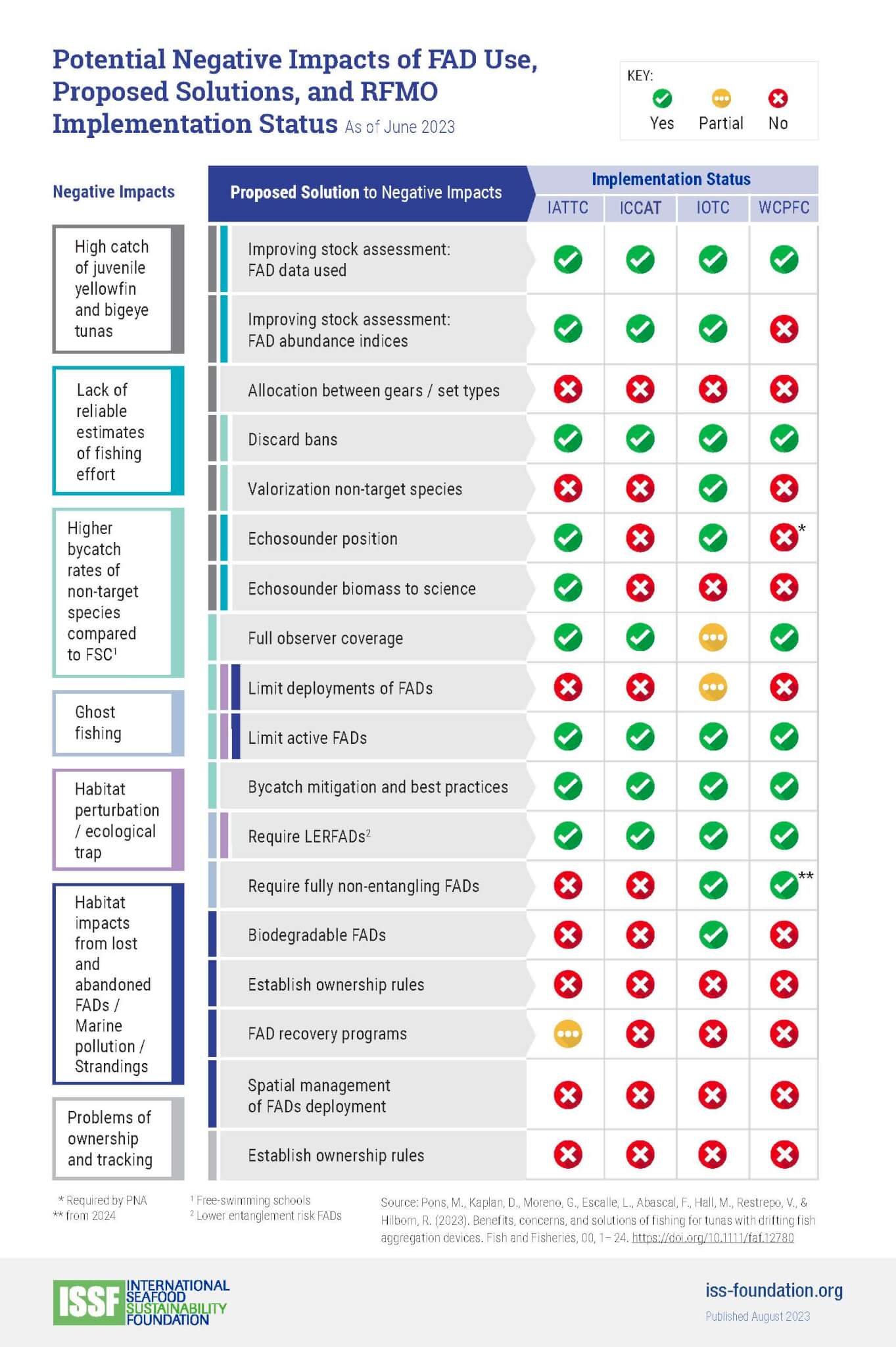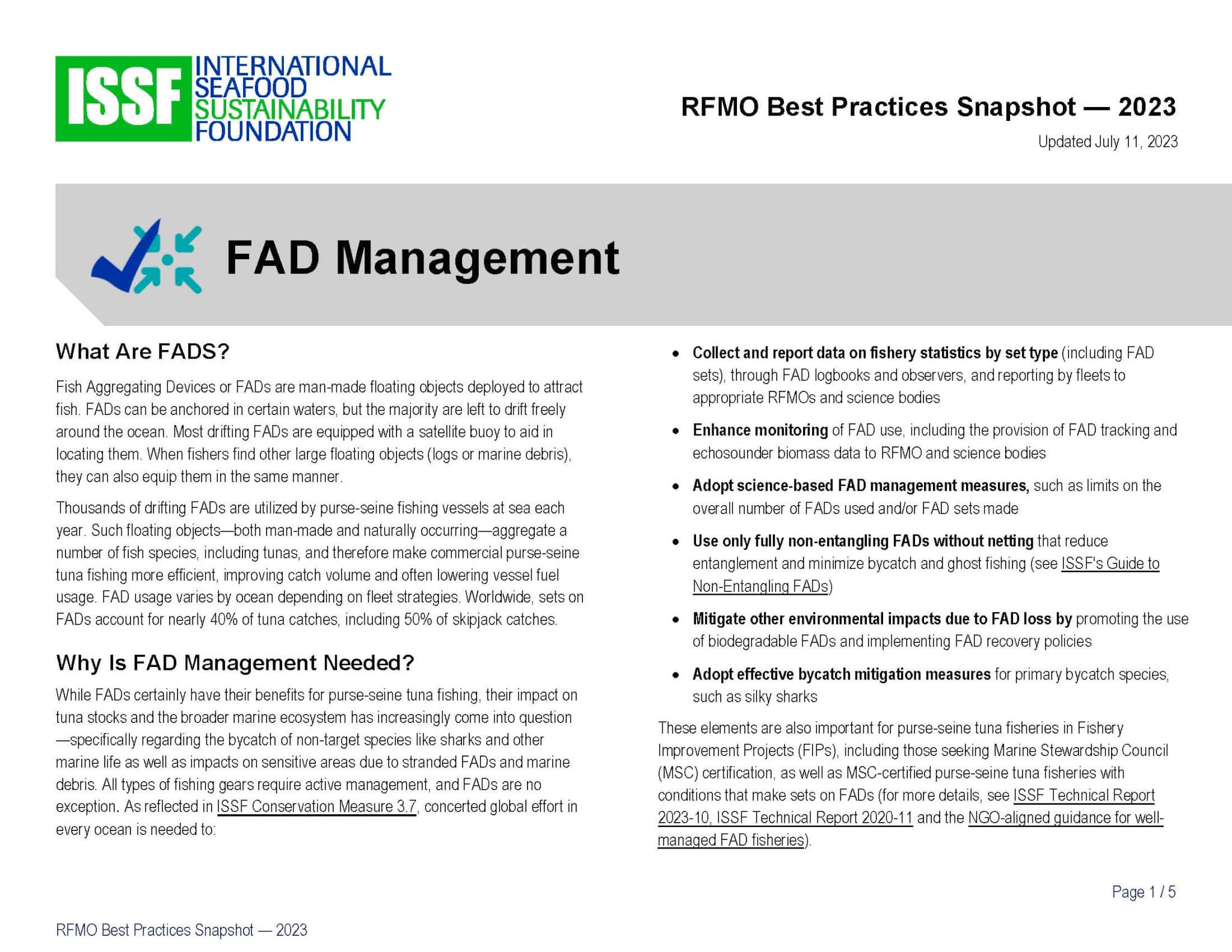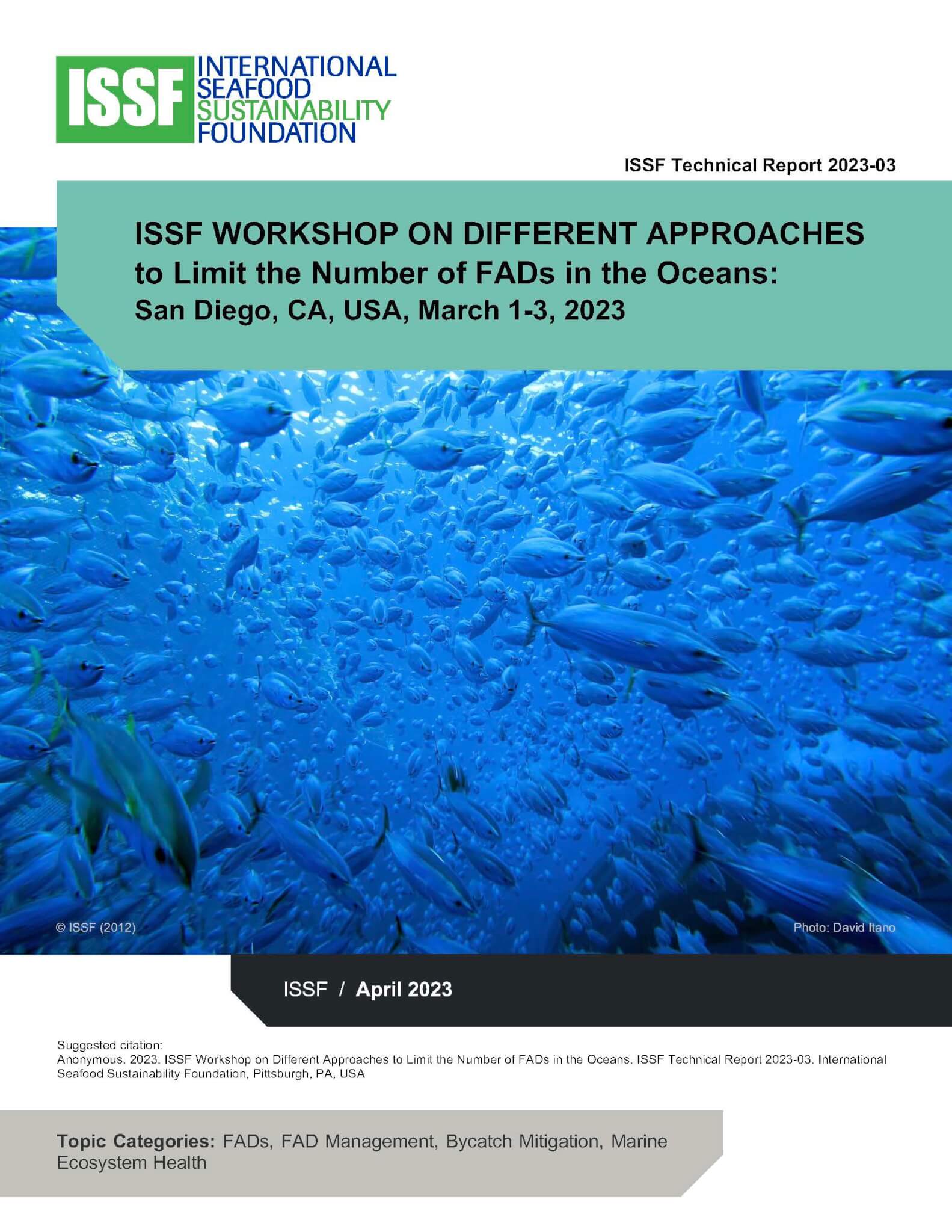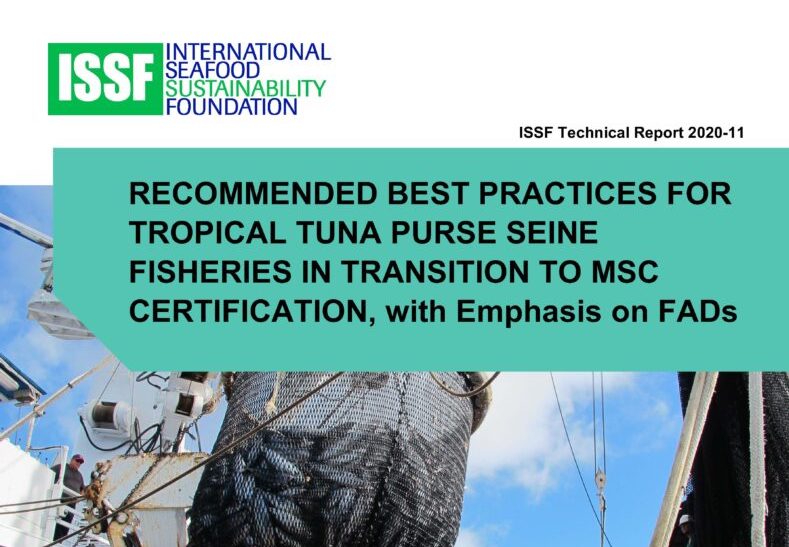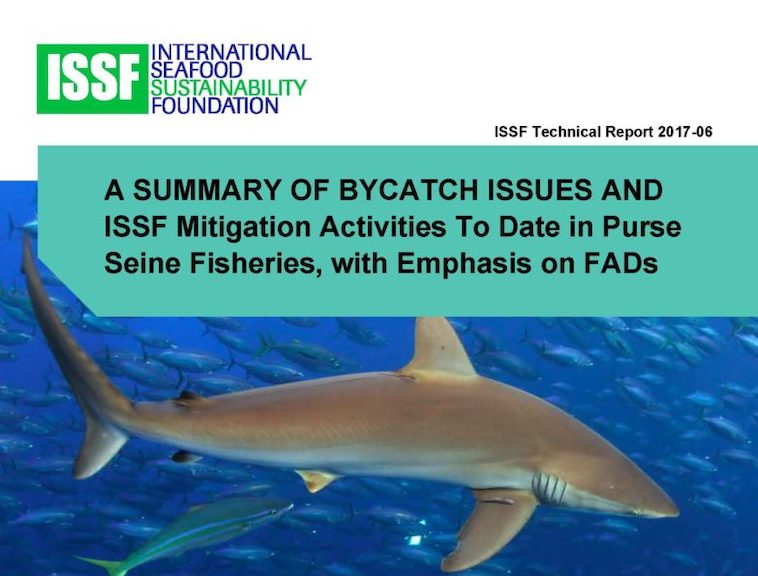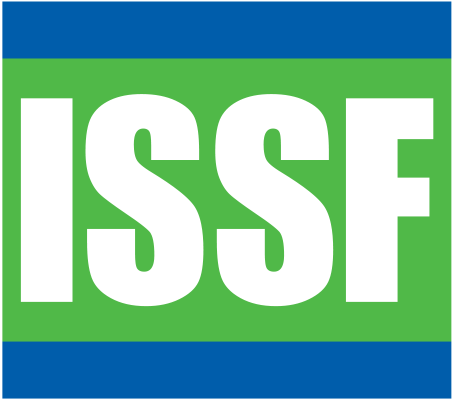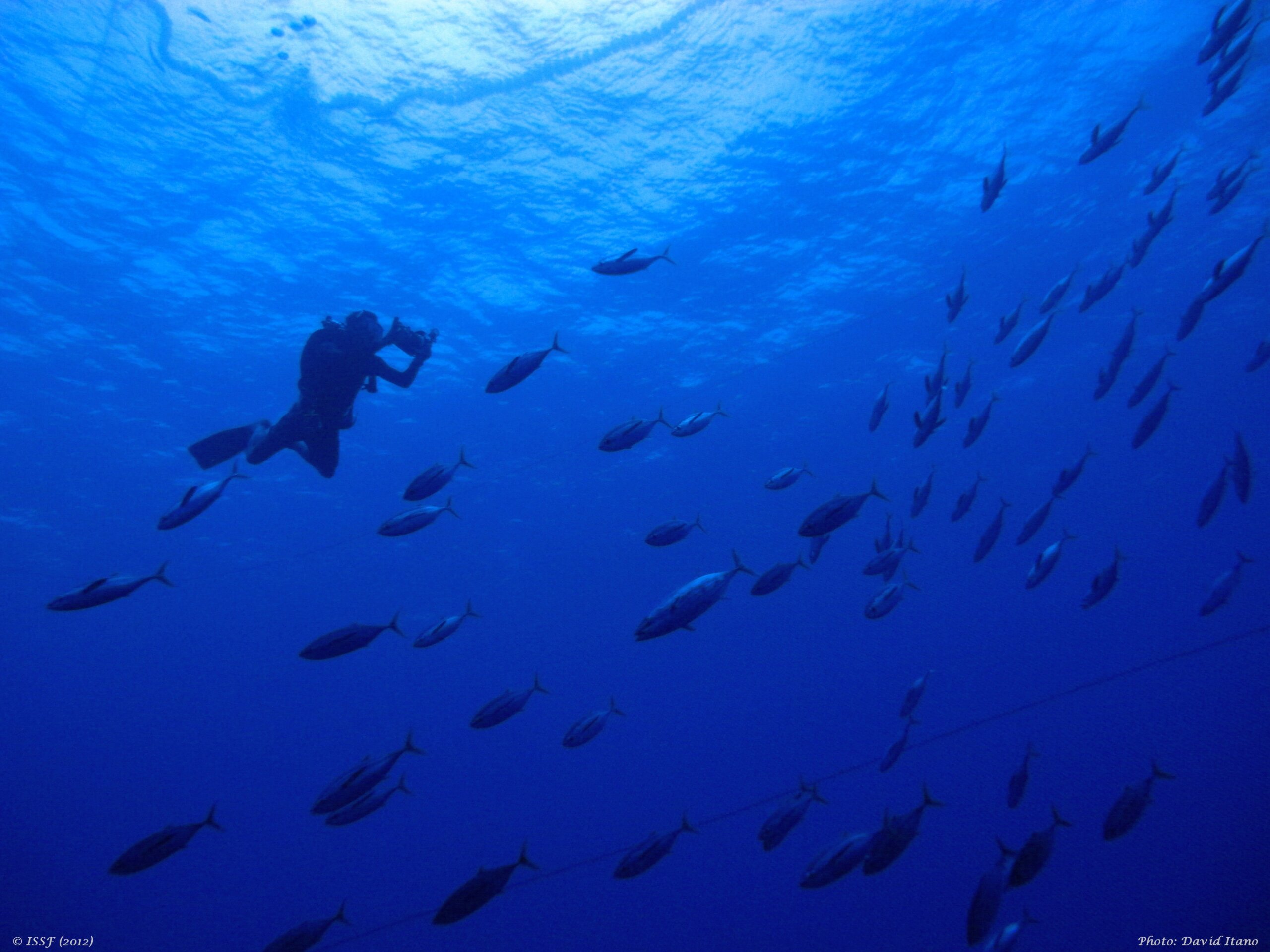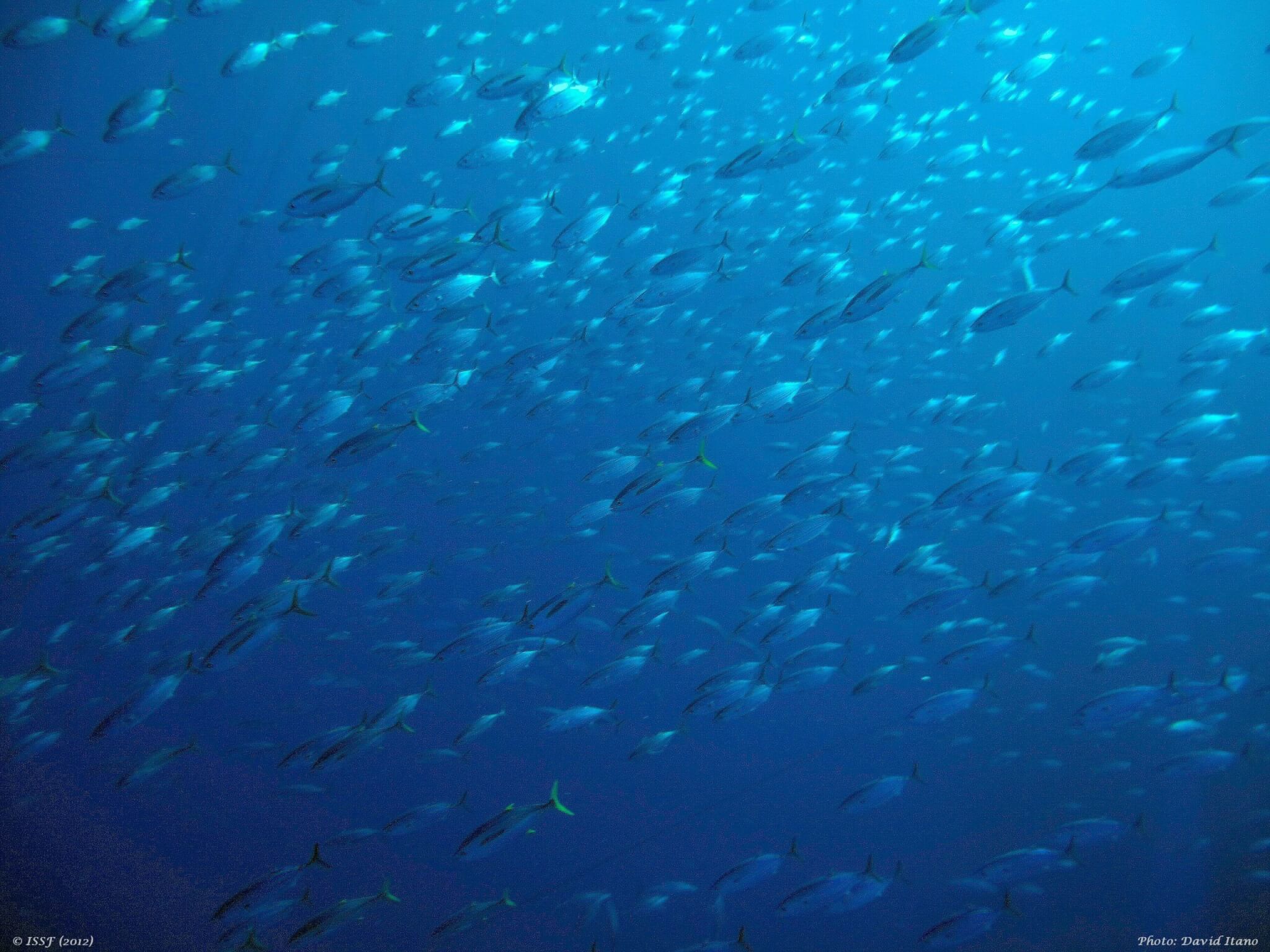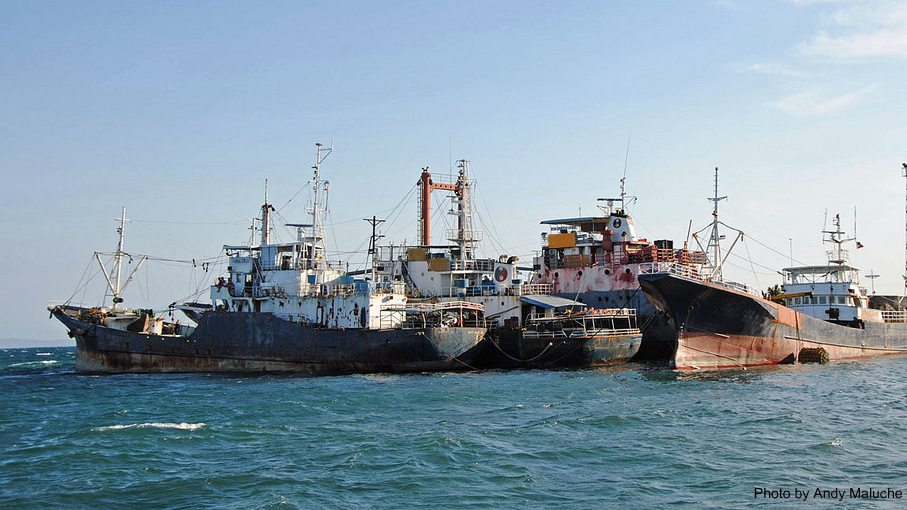
FAD Types
Fishers know that tunas are attracted to floating objects in the ocean, which includes natural floating objects (such as logs) and man-made floating objects — which vary in materials and design from region to region and fleet to fleet.
Fishing with FADs is an efficient method for catching tuna, used primarily by purse-seine vessels and sometimes by pole‑and‑line vessels.
FADs can be anchored to the ocean floor or set to drift in the open ocean. They consist of floating surface structures (rafts) and submerged structures (tails). In recent years, FADs have become larger and more sophisticated, and often are equipped with tracking technology that allows vessel crew to remotely monitor FAD locations.
FAD DESIGNS & MATERIALS
Traditional FADs
Man-made FADs that use netting to catch tuna can unintentionally ensnare vulnerable, non-target species like sharks and sea turtles.
The larger the net mesh size, the higher the entanglement risk. FADs with netting are classified as lower entanglement risk (LERFADs) or higher entanglement risk (HERFADs). Even after fishing operations have ended, discarded FAD netting that floats or sinks in the ocean can still cause entanglement through “ghost fishing.”
When they are lost or abandoned, traditional FADs constructed with plastic, metal, or other man-made components can damage marine environments and coastal areas.
Non-Entangling FADs
ISSF published our first fisher guide to building non-entangling FADs in 2015. Now four tuna RFMOs require purse-seine fleets in their region that fish with FADs to use only non-entangling FAD (NEFAD) designs. Some RFMOs also encourage fleets to use biodegradable materials in those non-entangling FADs.
Only FADs without netting on the surfaced and submerged structures can be considered fully “non-entangling.” ISSF Conservation Measure 3.5 requires our participating seafood companies to conduct transactions only with those purse seine vessels whose owners have a public policy regarding the use of only non-entangling FADs.
In ISSF Skippers Workshops, we tracked vessel crew views on switching from traditional FADs to non-entangling FADs to reduce bycatch in their fisheries, and noted growing acceptance of non-entangling designs over time.
Non-Entangling & Biodegradable FADs
FADs that do not have netting and do use natural materials pose the lowest risk among FAD types to marine animals and environments.
To develop and promote the adoption of more sustainable FADs, ISSF fisheries scientists have collaborated with skippers to brainstorm designs and test the durability of biodegradable materials. Some fishers have expressed preference for FADs that can last up to one year before degrading.
RELATED RESOURCES
Fisher Best-Practices Resources
In addition to advocating best practices in fisheries management to RFMOs — through reports, snapshots, and other materials — ISSF develops best-practices resources for fishers, including skippers workshops and guidebooks and an illustrated guide for building Fish Aggregating Devices (FADs) that are both non-entangling and biodegradable.
